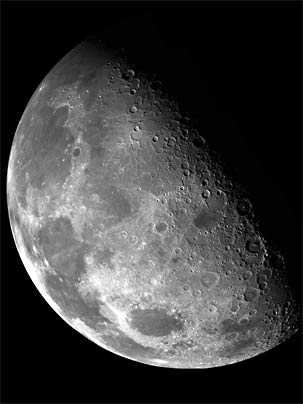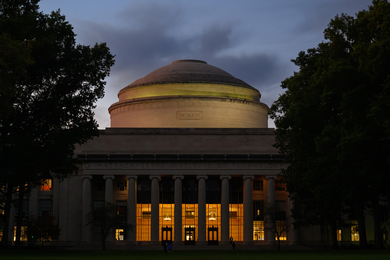Many of the engineers who developed the Apollo guidance system at MIT in the 1960s and 1970s were among the standing-room-only crowd that gathered Sept. 10 on campus for a special sneak preview of the documentary film, "In the Shadow of the Moon."
The film brings together for the first time the surviving crew members from every single Apollo mission that flew to the moon, and allows them to tell their story in their own words.
Four of the 12 astronauts who walked on the moon during Apollo program received degrees from MIT's Department of Aeronautics and Astronautics. Each was interviewed in the making of the film, which intersperses high-resolution footage from the Apollo missions with interviews of 10 of the original Apollo astronauts.
"The biggest joy was on the way home… an overwhelming sense of connectedness to the universe accompanied by a moment of ecstasy…an epiphany," said Edgar D. Mitchell (Sc.D., 1964) who walked on the moon during the Apollo 14 mission in 1971.
David R. Scott (S.M. and E.A.A., 1962) reflected on viewing the Earth from the moon. "It truly is an oasis, and we don't take good care of it," said Scott in the film. Scott commanded the Apollo 15 lunar landing mission in 1971 and also flew on Apollo 9 in 1969 with MIT alum Russell L. Schweickart (B.S. and M.S., 1963).
MIT's Instrumentation Lab (now Draper Laboratory) developed the onboard guidance, navigation, and control systems for the Apollo command and lunar modules. During the first lunar landing, the guidance computer displayed program alarms when simultaneous procession of the landing solution and the abort rendezvous solution led to an overload condition. "That combination wasn't anticipated by the guys at MIT," said Buzz Aldrin (Sc.D. 1963), who was the lunar module pilot of the Apollo 11 mission that accomplished the first lunar landing in July 1969.
The Apollo guidance computer experienced no hardware errors during 15 flights of the Apollo spacecraft with astronauts on board, including nine flights to the moon and six successful lunar landings.
Following the Sept. 10 screening at MIT, Professor David Mindell moderated a panel discussion on the film. Panelists included Professor Emeritus Robert C. Seamans, Jr. (S.M. 1942, Sc.D.), who led the Apollo program while he served as NASA's deputy administrator from 1960 to 1968, and Professor Jeffrey A. Hoffman, who flew five space shuttle missions as a NASA astronaut. The film's director, David Sington, and co-producer, Christopher Riley, also participated in the discussion.
"It was a great film," said Seamans. "It not only portrayed an epic period, but it put heart and soul into it."
Seamans, who briefed President John F. Kennedy on NASA's early planning for a lunar landing in 1961 and helped shape the goal of landing of landing a man on the moon before the end of the decade, said the eight years he spent at the U.S. space agency represent "the most important part" of his life.
"The rocks Apollo brought back from the moon have been like a Rosetta stone in understanding the evolution of the universe," said Hoffman. "The value that we got scientifically from Apollo should not be underestimated."
"I think the film is an optimistic film because it represents what we can do, what we can achieve," said Sington. "If this film ends up sending a few more people to MIT, then it will have been a success."
A version of this article appeared in MIT Tech Talk on September 19, 2007 (download PDF).






